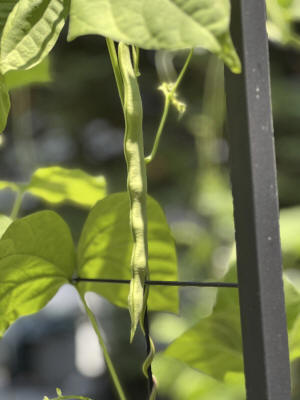How to tell when your garden veggies are ripe for harvesting
[August 12, 2025]
By JESSICA DAMIANO
Itís time ó or getting to be time ó for us gardeners to reap what weíve
sown.
Although itís fairly evident when some edibles, like tomatoes, are ripe
for the picking (uniform red, yellow or orange color), that isnít the
case with every crop.
Popular crops' telltale signs of deliciousness
Zucchini, for instance, doesnít change color. Although it might be
tempting to grow a 15-inch-long squash, it will likely be tough. For
optimal tenderness, pick individual fruits when theyíre 6-8 inches
(15-20 centimeters) long.
All varieties of green beans should be harvested when they are about as
thick as a pencil. Once the plant begins producing, check it every day
or two and remove beans that are ready; the more you pick, the more the
plant will make.
Green peppers can be harvested at any size but are considered fully
mature when they turn red. As a bonus, red peppers are sweeter and
contain more nutrients.
There isnít such a thing as an unripe cucumber ó even small ones are
crispy and juicy. The hazard here is allowing them to remain on the vine
too long, which can result in an off-putting taste and texture.
Cucumbers are considered mature when their bumpy skin smooths out.
Youíll know sweet corn is ready as soon as the silk at the top of its
ear turns brown. If you still arenít sure, peel back a small portion of
husk and press your nail into a kernel; if it releases a milky fluid,
itís ripe.
Cantaloupe will practically harvest itself when the time is right: A
light tug will release the melon from its stem. If any force is
required, itís not ready.

Honeydew melons are ripe when their bottoms begin to soften, and
watermelons when their undersides turn a creamy white color.
When to unearth root crops
Determining when to dig up root crops can pose a bit more of a
challenge, as they canít be visually assessed without disturbing them.
But there are some signs to watch for.
[to top of second column]
|

This undated image provided by Jessica Damiano shows a green bean
ready for harvest on Long Island, N.Y. Beans should be picked when
they are roughly the thickness of a pencil. (Jessica Damiano via AP)
 Youíll know garlic bulbs are mature
when all but five leaves at the top of the plant have turned
completely yellow or brown.
Onions are ready when their tops flop over and turn brown.
To assess beets, select one plant and push aside the soil at its
base to expose the entire top of the root. Harvest when it measures
between 1 Ĺ and 3 inches (3.8 and 5 centimeters) wide, depending on
variety. If itís too small, cover it back up, water and try again in
a week. Avoid allowing beets to get too big, however, or theyíll
lose sweetness and turn tough.
Standard potatoes are fully mature when their foliage dies back. But
if itís the so-called ďnewĒ potatoes youíre after, dig up the
thin-skinned babies 2-3 weeks after the plant blooms. Early-maturing
potato types will be ready sooner than the standard, so check tags
for variety-specific details. (Note: Due to their delicate skin, new
potatoes should be consumed immediately, as they do not store well.)
Carrots are ready when they poke up from underground but can be left
in the soil, even into winter, until you need them.
___
Jessica Damiano writes weekly gardening columns for the AP and
publishes the award-winning Weekly Dirt Newsletter.
All contents © copyright 2025 Associated Press. All rights reserved |